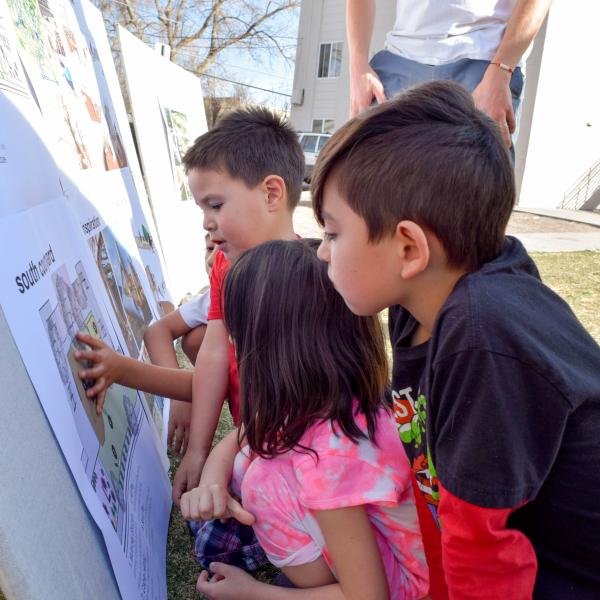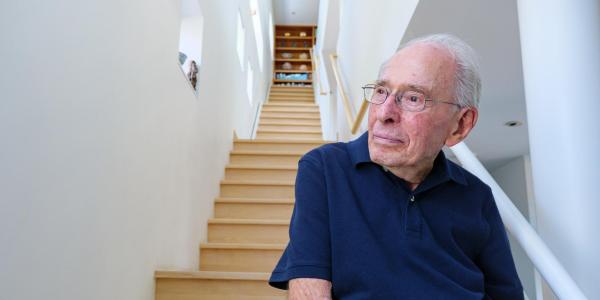Environmental design students at CU Boulder are taking their education out of the classroom and into the community to design and build a neighborhood playground.
The project involves building a play area for an affordable housing community in Lakewood, Colorado, whose current playground doesn’t adequately serve the 67 children who make up more than 50 percent of the population in that community.
Along the way, students get hands-on building experience and learn communication skills. And, they’re learning that the youngsters have definite opinions about the equipment that should go in their playground.
The project team consists of 18 students in the third year of the Environmental Design Program, which includes specialties in architecture, landscape architecture and urban planning. Two students on the team are juniors Kristina Lu and Jenice Forrister. Lu’s emphasis is on architecture and Forrister’s is on design studies.
“We showed the kids and adults pictures of playgrounds from around the world, and they picked what they liked,” Lu said. “We learned that swings, rope features and monkey bars are a big hit.”
 The playground features specially designed play equipment the children requested. The plan addresses safety concerns and provides seating where parents can keep an eye on children while meeting and talking with their neighbors. To incorporate nature into the design, a sensory garden will include plants that attract butterflies and birds. Soccer is popular with 7- to 12-year-olds, so soccer goals will be added.
The playground features specially designed play equipment the children requested. The plan addresses safety concerns and provides seating where parents can keep an eye on children while meeting and talking with their neighbors. To incorporate nature into the design, a sensory garden will include plants that attract butterflies and birds. Soccer is popular with 7- to 12-year-olds, so soccer goals will be added.
The ENVD team believes that play is a right, not a privilege, that safe playgrounds should be available to all children regardless of a child’s socio-economic status, said Jeremy Ehly, instructor of the studio design class.
“This project started when we were approached by community members,” Ehly said. “I’ve been interested in doing a playground, since I have a 2-year-old son. I’ve taken him to several playgrounds, but I’ve been uninspired with what’s out there. So, I immediately jumped on this, because it involves a variety of disciplines the students can learn.”
This is the first hands-on, design-build project launched by this team of ENVD students, and they are excited to see their design evolve from concept to completion over the course of the semester.
Community playgrounds provide children with opportunities for play, and promote healthy lifestyles and encourage interaction among neighbors while improving the quality of life for the entire community.
The design is based on children’s drawings of what they wanted in a playground, created at a special event held earlier in the semester, as well as from parents’ suggestions. It is important to the student team that the community be invested in and proud of the final product. Rather than going in and building what the students assume the community needs, they connected with the adults and children and sought their ideas.
“One day when we went to the site, there were kids playing and they watched us set up,” Lu said. “They weren’t shy. They came over and asked what we were doing. They looked at the model of the new playground and got so excited. The adults are grateful that we are putting so much effort into providing the kids with a place to play safely.”
Because their budget is so low, the team is integrating some of the existing playground structures in to the new design. And children who have grown up playing on the old structures—as meager as they are—have formed an emotional attachment to them.
Forrister said she likes the idea of a class project that lets them do something for the neighborhood.
“We’re doing this for the kids,” she said. “As a kid, I went to so many amazing playgrounds. I’m taking my experiences from when I was a kid and working those ideas into this project. It’s important to give kids a good place to play. What’s there now is dilapidated and not a playable structure. Hopefully, we’re designing something that hasn’t been seen before and that they’ll love.”
To help purchase the building supplies, the student team has launched a crowdfunding campaign. Find out more by reading the Playscape (FUN)draising crowdfunding page.



